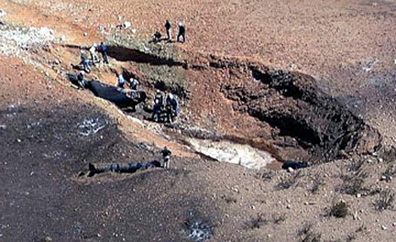
Geotimes Home | AGI Home | Information Services | Geoscience Education | Public Policy | Programs | Publications | Careers

 Seismologist
Keith Koper is throwing around phrases like “punitive damages” and “legal
liability” as naturally as he would “seismic propagation” and “Rayleigh
waves.” Koper, an assistant professor at St. Louis University, is beefing
up on his legal know-how and lending his seismic expertise to a lawsuit surrounding
a natural gas pipeline explosion that killed 11 people in New Mexico.
Seismologist
Keith Koper is throwing around phrases like “punitive damages” and “legal
liability” as naturally as he would “seismic propagation” and “Rayleigh
waves.” Koper, an assistant professor at St. Louis University, is beefing
up on his legal know-how and lending his seismic expertise to a lawsuit surrounding
a natural gas pipeline explosion that killed 11 people in New Mexico.  |
Geotimes Home | AGI Home | Information Services | Geoscience Education | Public Policy | Programs | Publications | Careers |